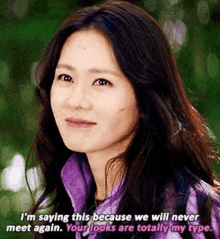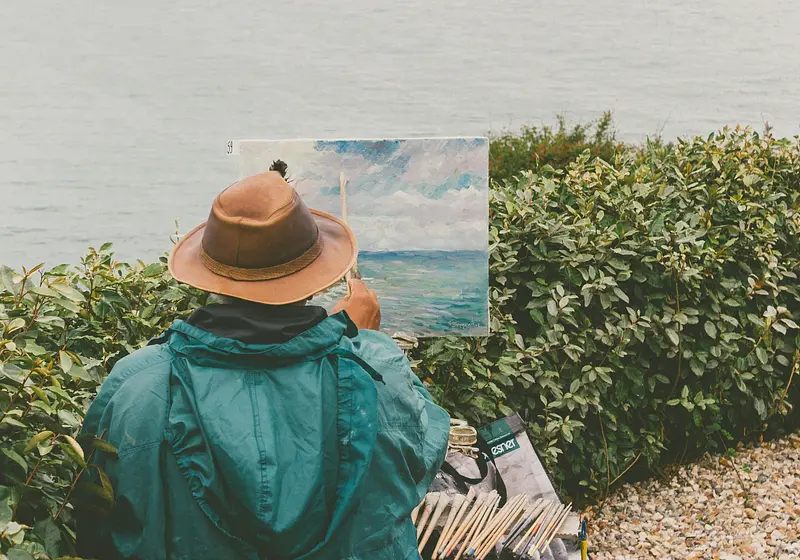There is always so much pressure to “understand” —to act intellectually, and know every hidden meaning about each painting. But that is just not realistic for the average person, nor should it be the goal.
Image Credit: eberhard grossgasteiger from Pexels
I never formally studied art, but I’ve always been drawn to it. might not interpret every piece the way critics or textbooks suggest, but I could happily spend entire days wandering through museums and galleries, just soaking it all in.
Art appreciation isn’t about expertise—it’s about curiosity, emotion, and connection.
Let us slide into your dms 🥰
Get notified of top trending articles like this one every week! (we won't spam you)Start With What You See
Breathe in. There is no pressure—it’s simple. Look at things you see.
Colours, shapes, textures, anything that catched your eye. Sit back and look, just look at the visual details.
If you remember the elements of art you learn in elementary school, those can also guide you—line, shape, form, space, value, colour, and texture.
Image Credit: Europeana from Unsplash
In this painting for example, you see a vase of flowers, they are of varied kinds, colourful. There are more red and pink flowers than anything else. What does that colour symbolise?
Why is the background dark? There’s some ribbon on the platform which is seemingly marble and overfilling with flowers. The vase seems to be metal. The ribbon has something attached to it which appears to be a compass or something of the sort.
See, this is it. Once you understand what you see and ask the right questions, you can move on and:

Take the Quiz: What Candle Scent Matches Your Overall Aesthetic?
Halloween is just around the corner. It's time to light that candle. Take this quiz and find out what candle scent suits you best.
Look Deeper—Symbols and Emotions
Do you see any emotion in the painting? What do you feel when you look at it? Don’t try to think of what the artist wanted to do or what you think would be intelligent, let go and feel.
Look at the painting beyond the visuals for a second and just feel. All emotions are valid.
Eventually, focus back to the painting. Really try to analyse it. What do the colours you see represent?
Is there something about the specific combination and composition that speaks something to you? Really look at the symbols of colour, objects, positions. What could the artist have meant to depict through them?
Image Credit: Friends of American Art Collection from Wikimedia Commons
In this painting for example, seeing this immediately makes me think of struggle and helplessness. We see two people, an older man and a younger woman with serious expressions on their faces. The man holds a pitchfork, wears overalls and a coat.
They seem to be standing in front of a seemingly nice house. The colours are faded which further emphasise the feeling of struggle and maybe even suggests an older time and poverty. The expressions, clothes and pitchfork perhaps suggest a working man, maybe a farmer, the seriousness can depict the dedicated work ethic required for poor people in rural areas.
Now, this painting, we know is about the complexities of rural life in America so the breakdown fits.
This brings you to really examining paintings, looking at visual attributes and trying to look into the deeper meaning. However, like the case above, you don’t always have to verify what you think or read other analyses because appreciating art is about how it relates to you and how you:
Make Your Own Meaning
Art is formed when an artist expresses themselves in any medium, in this case, paintings. But, there is this extra expectation to understand what the artist meant to create, but really appreciating art comes down to how people other than the artist interpret it. What do you think it is about?
What do you think it means? How does it make you feel? What? Why? Does it relate to your life? Do you like it? What do you like about it and what don’t you?
Image Credit: adrianna geo from Unsplash
There is no point in trying to decode what the greatest artist of all time meant to create because like Oscar Wilde said, “All art is quite useless”, and that art can just mean what you want it to mean and what you think it means and how it means to you.
Optional: Art Movements
You can go deeper into exploring and understanding art. If you’re looking into the more technical analysis side of art, consider learning about the different art movements and what they entailed, the famous artists, what they wanted to achieve, what made the art stand out. This will really help you understand the context in which art is made and therefore appreciate it a lot better.
Image Credit: Friedrich from Wikimedia Commons
For example, Romanticism was an art movement that began towards the end of the 18th century. It focused on emotion, imagination, and the beauty and sometimes terror of nature. Artists like Caspar David Friedrich and J.M.W. Turner created powerful works that made viewers feel deeply rather than just think critically.
Some other significant movements that you can look into include, Realism, Impressionism, Surrealism, Abstract Art, Pop Art, Cubism and more.
Conclusion: Enjoy Art
At the end of the day, if you’re interested in art, explore it, try to understand it but do not force yourself to understand the way you think you should. Let go and interact with art, feel it the way it is meant to be felt. Because appreciating art does not constitute studying it.
Image Credit: Andrew Neel fromt Unsplash
So, go to museums, look up paintings and artists and just immerse yourself in the beauty of paintings and art. If you can’t visit a museum, you can explore online galleries, local street art, or even start a small art journal to document what moves you. The more you engage, the more you’ll appreciate.
Like Vincent van Gogh said, "What would life be if we had no courage to attempt anything?" So go forth, embrace the art around you, and most importantly—enjoy the journey.














